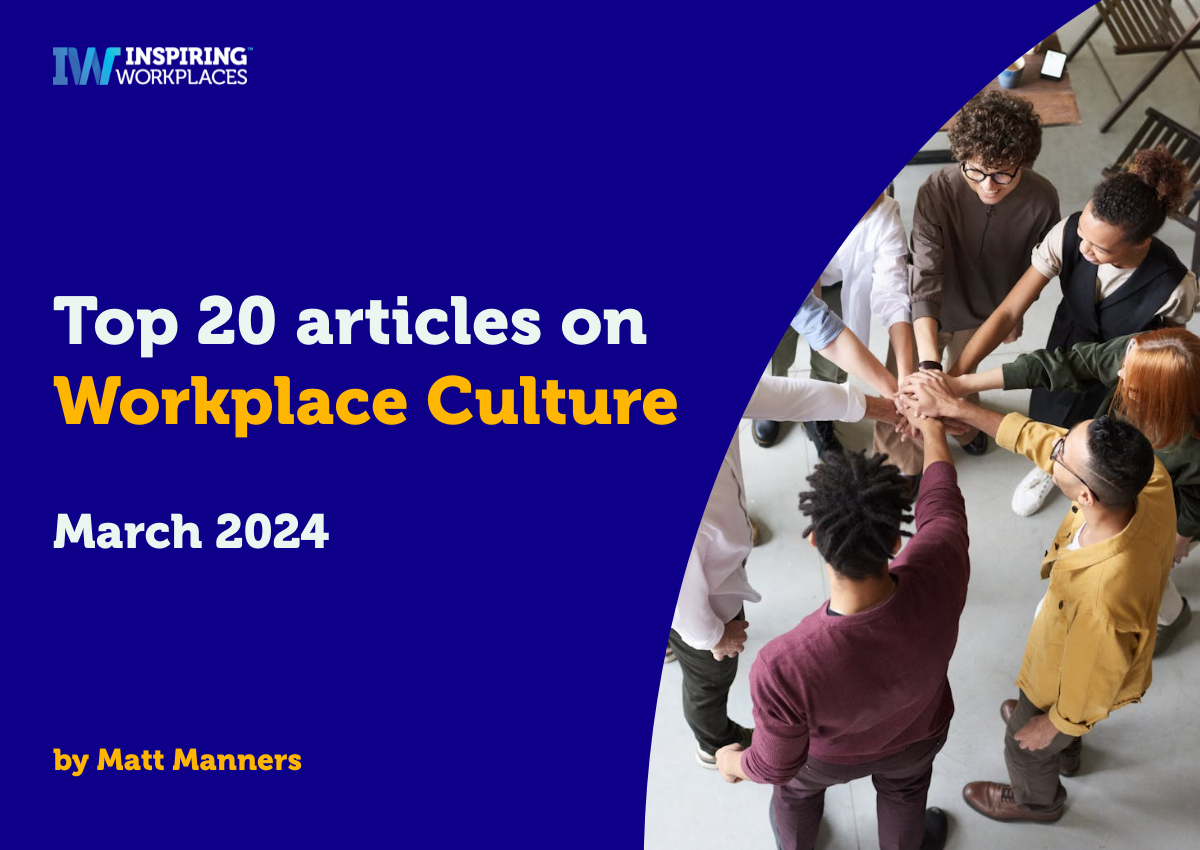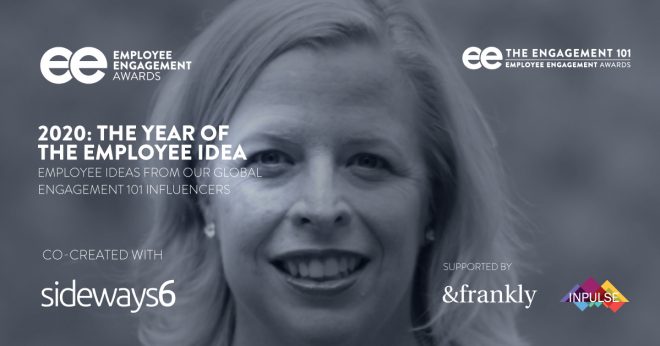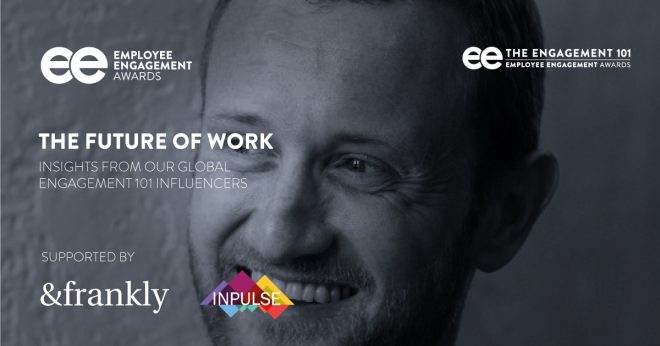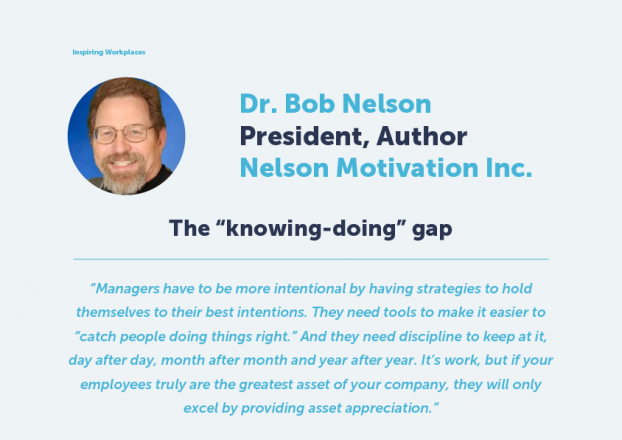
15th April 2024
Top 20 Articles on Workplace Culture: March 2024

Welcome to the Inspiring Workplaces Top 20 Articles on Workplace Culture for March 2024.
We want to help inform and inspire you from some of the best content out there. Each month we will consolidate these articles for you to help give you a quick and easy snapshot. To help drive you and your organisations forward.
The articles will be underpinned by seven key elements that are reflected in our bespoke COMPASS methodology, that also underpin the Top Inspiring Workplaces worldwide. They are:
- Wellbeing
- Culture & Purpose
- Leadership
- Inclusion
- Employee Experience
- Communication & Voice
- Society & Sustainability
Key Workplace Culture Learnings for March:
- Kindness in Leadership:
- Kindness drives positive outcomes and fosters a healthy workplace culture.
- Prioritizing empathy, fairness, and compassion enhances job satisfaction, productivity, and trust in organizational leadership.
- Cultural Influence on Relationships:
- Understanding core elements like place, power, purpose, privacy, presence, and pacing aids in navigating cultural differences in relationship building.
- Employee Recognition and Engagement:
- Effective recognition strategies lead to higher engagement and productivity.
- Recognition programs should be fun, inclusive, and tailored to individual preferences.
- Shift in Employee Engagement:
- Employees prioritize purpose, well-being, autonomy, and individual influence in the workplace.
- Purpose-driven companies experience greater growth rates and financial gains.
- Psychological Safety:
- Psychological safety fosters creativity, innovation, retention, satisfaction, and collaboration.
- Leaders play a crucial role in cultivating a psychologically safe environment.
- Gender Equity and Leadership:
- Challenges persist in achieving gender equity in leadership roles.
- Soft skills like empathy and authenticity are essential for successful leadership.
- Employee Advocacy and Crisis Communication:
- Employee networks play a vital role in safeguarding companies during crises.
- Authentic communication and empowering employee voices are essential for crisis management.
- Neurodiversity and Workplace Inclusion:
- Lack of workplace support impacts neurodiverse individuals’ productivity and well-being.
- Inclusive hiring practices and neuro-inclusion training are recommended for fostering diversity and inclusion.
- Effective Communication and Collaboration:
- Open dialogue, empathy, and compassion enhance workplace communication and collaboration.
- Flexibility in work arrangements and recognition of individual preferences contribute to motivation and productivity.
- Company Culture and Leadership Transformation:
- Leadership styles are evolving to address complex challenges in the modern workplace.
- Creating a conscious culture focused on mutual respect and empathy is crucial for attracting and retaining talent.
The articles are as follows…
Why it’s time for organisations to unleash a new weapon: kindness
Source: People Management
Author: Shivani Sharma
IW COMPASS point: Leadership
Key Takeaways
- Kindness isn’t just a moral virtue; it’s a fundamental aspect of effective leadership, driving positive outcomes and fostering a healthy workplace culture.
- In today’s business landscape, where issues like bullying and stress are prevalent, fostering kindness can lead to increased job satisfaction, productivity, and trust in organizational leadership.
- Kindness isn’t about being weak or avoiding tough decisions; it’s about prioritizing empathy, fairness, and compassion, both in interpersonal interactions and in organizational policies.
- Organizations should create space to understand and cultivate kindness, integrating it into their values, leadership development programs, and everyday practices.
- Practicing self-kindness is essential for leaders, as it contributes to better decision-making, resilience, and overall leadership effectiveness.
- Kindness transcends cultural and societal boundaries and can serve as a powerful catalyst for organizational culture change and transformation.
- Embracing kindness in leadership can turn challenges into opportunities, driving organizational success and fostering a positive impact on society as a whole.
Read the full article here
Building cross-cultural relationships in a global workplace
Source: Harvard Business Review
Authors: Andy Molinsky and Melissa Hahn
IW COMPASS point: Inclusion
Key Takeaways
- Cultural upbringing significantly influences how individuals form and maintain connections with others.
- Six core elements of the relationship code include: place, power, purpose, privacy, presence, and pacing.
- Understanding these elements helps professionals anticipate and navigate cultural differences in relationship building.
- Place: Relationship building thrives in different locations across cultures; knowing where bonding is likely to occur is crucial.
- Power: Cultural perceptions of hierarchy shape relationship boundaries and who takes the lead in building connections.
- Purpose: Professional relationships serve varied purposes across cultures, from instrumental benefits to intrinsic camaraderie.
- Privacy: Cultural norms dictate what individuals reveal and when, impacting personal disclosure in relationships.
- Presence: Verbal and non-verbal presentation styles vary across cultures, leading to potential misunderstandings in initial interactions.
- Pacing: Comfort levels in getting acquainted differ across cultures, influencing the speed at which relationships develop.
- These elements provide insight into cultural nuances and help bridge gaps in cross-cultural relationship building. Understanding and adapting to cultural differences are crucial steps in fostering successful global collaborations.
Read the full article here
Complicated, exclusionary, or just plain boring? Let’s fix your recognition program
Source: HR Grapevine
Author: Benjamin Broomfield, featuring insights from Beril McManus
IW COMPASS point: Employee Experience
Key Takeaways
- Effective employee recognition drives engagement, fulfillment, and productivity, with Gallup reporting 20 times higher engagement when employees receive great recognition.
- Ahead of Employee Appreciation Day (EAD) 2024, it’s crucial to enhance recognition strategies to be more fun, inclusive, and engaging.
- American Airlines exemplifies effective recognition by prioritizing genuine connections and measurable programs tied to business purposes.
- Common complaints about recognition programs include being uninteresting, uninclusive, and unrealistic.
- To address these issues, recognition programs should be fun, fresh, and tailored to individual preferences, include and equitably reward all employees, and be seamlessly integrated into the workflow.
- Making recognition a part of the daily routine fosters a culture where appreciation is a natural habit rather than a burdensome task.
Read the full article here
A new era of work: aligning purpose with employee well-being for organizational success
Source: International Business Times
Author: Declan Lafray
IW COMPASS point: Culture & Purpose
Key Takeaways
- Transformation in Employee Engagement: The workplace is witnessing a significant shift in employee priorities, emphasizing purpose, well-being, autonomy, and individual influence.
- Rise of Purpose-Driven Workplaces: Employees seek more than just a paycheck; they want their work to align with their values, leading to improved engagement, retention, and satisfaction.
- Impact of Purpose-Driven Strategies: Companies fostering a sense of purpose experience financial gains, outperforming the stock market and enjoying higher retention rates.
- Focus on Mental Health and Well-being: Prioritizing mental health in the workplace is essential, with employees valuing environments where they feel valued and supported.
- Innovative Practices: Companies like Quest Diagnostics demonstrate how aligning corporate purpose with employee well-being enhances engagement and satisfaction.
- Volunteerism as Engagement Driver: Volunteer programs play a crucial role in promoting empathy, reducing stress, and enhancing leadership skills, increasing the sense of purpose at work.
- Corporate Responsibility and Social Impact: Aligning organizational purpose with employee well-being reduces turnover, increases productivity, and fosters a compassionate work culture.
- Strategic Imperative: Aligning employee well-being with organizational purpose is not just desirable but essential for the success and sustainability of modern businesses.
Read the full article here
Psychological safety: Creating a workplace where all thrive
Source: Journal of Accountancy
Author: Jeannine K. Brown
IW COMPASS point: Wellbeing
Key Takeaways
- Psychological safety in the workplace allows team members to voice disagreement, admit mistakes, take reasonable risks, and ask for help without fear of reprisal.
- Research shows that teams with psychological safety experience enhanced creativity, innovation, retention, satisfaction, and collaboration.
- Despite its benefits, only 26% of leaders create psychological safety for their teams, indicating the need for proactive efforts to cultivate such an environment.
- Leaders play a crucial role in fostering psychological safety by changing how they talk about mistakes, managing delivery tone, instituting after-action reports, promoting open communication, and demonstrating emotional resilience.
- Establishing a baseline through data collection and conversations across the team is essential for addressing psychological safety issues.
- Creating a psychologically safe environment requires breaking old habits and relearning how to provide feedback, lead, and communicate effectively.
- While it may not be easy, creating psychological safety is a worthwhile endeavour that can significantly impact talent retention and team performance.
Read the full article here
International Women’s Day 2024: inspiring inclusion
Source: Relocate Global
Author: Ruth Holmes
IW COMPASS point: Inclusion
Key Takeaways
- Championing Women’s Achievements: The Think Women hub celebrates 40 Outstanding Global Women, emphasizing their invaluable stories for aspiring individuals across various fields.
- Spotlighting Intersectionality: Initiatives like Think Women highlight the intersectionality of inequality, including race and disability, challenging longstanding assumptions and leadership stereotypes.
- Leadership Disparities: Despite progress, statistics reveal significant disparities in leadership tenure, with only a small proportion of women appointed as CEOs of global companies, emphasizing the ongoing need for allyship and support.
- Barriers to Senior Leadership: Structural and social barriers, such as performance management systems favouring individuals without additional responsibilities, hinder women’s progress to senior leadership roles, highlighting the importance of organizational support and networking opportunities.
- Workforce Wellbeing: Addressing workforce wellbeing, including life stages like menopause, is crucial for retaining female talent and promoting gender equity in senior leadership positions.
- Gender Pay Equity: The CIPD’s Pay, Performance and Transparency 2024 report highlights concerning trends in gender pay gap reporting, underscoring the need for organizations to address pay disparities and ensure fair workplace practices.
- Performance Management and Pay Equity: Exploring the links between performance management, talent management, and reward systems is crucial for promoting pay equity and fostering diverse and inclusive workplaces.
Read the full article here
Do female leaders need to drop their soft skills to avoid the dreaded ‘glass cliff’?
Source: People Management
Author: Sophie Williams
IW COMPASS point: Leadership
Key Takeaways
- The “”glass cliff”” phenomenon involves underrepresented leaders, often women, being appointed to leadership roles during organizational crises.
- These leaders face heightened risk of failure and association with crisis and poor performance.
- Research indicates a shift in perception during crises, with soft skills becoming more valued, especially those traditionally associated with women.
- However, women leaders are more likely to be fired with short tenure, regardless of performance, compared to their male counterparts.
- The article argues against women distancing themselves from feminine traits, advocating instead for recognizing the value of soft skills in all situations.
- Soft skills like empathy, emotional intelligence (EQ), and authenticity are crucial for successful leadership, even more so during challenging times.
- Authenticity, vulnerability, and empathy are highlighted as essential qualities for leaders, challenging traditional stereotypes of leadership.
- Female leaders are encouraged to embrace their authentic selves and natural skills rather than conforming to traditional male leadership norms.
- Embracing soft skills can lead to increased innovation, engagement, and productivity, setting female leaders up for success in navigating crises and leadership challenges.
Read the full article here
Culture Capital: Nikhil Dey on the Employee Network and how it protects net worth
Source: Media Brief
Author: Nikhil Dey
IW COMPASS point: Employee Voice
Key Takeaways
- Nikhil Dey, Executive Director at Adfactors PR, discusses the significance of the Employee Network in safeguarding a company during crises.
- He highlights the importance of authentic communication and the process-oriented approach to culture communication.
- Dey identifies four key components essential for shaping an organization’s culture: Structure, Story, Self, and Social Connections.
- Social Connections, the fourth element, is particularly crucial during crises, emphasizing the pivotal role of employee advocates.
- Dey draws parallels between individual character and corporate culture, emphasizing the importance of doing the right thing even under scrutiny.
- He stresses the significance of actions over words in crisis communication, emphasizing the need for decisive action and transparent communication.
- Enabling authentic employee voices is essential, best achieved through empowering social media policies, fostering a culture of storytelling, promoting lifelong learning, and creating psychological safety in the workplace.
- Dey underscores the importance of listening to employee and customer feedback, activating their voices to bolster brand credibility during crises.
- He cites the example of Nestle’s #WeMissYouToo campaign, showcasing the power of consumer voices in rebuilding brand trust.
- In conclusion, Dey advocates for investing in employee training and empowerment during peacetime to cultivate a robust network of employee advocates capable of protecting a company’s reputation during crises.
Read the full article here
Half of neurodiverse people missing work due to lack of workplace support
Source: Workplace Insight
Author: Marvin Gort
IW COMPASS point: Wellbeing
Key Takeaways
- City & Guilds’ Neurodiversity Index reveals challenges faced by neurodiverse individuals in the workplace.
- Half of neurodivergent people surveyed missed work last year due to lack of support.
- 36% of neurodivergent employees receive no guidance or support at work, while 20% are waiting for adjustments.
- Lack of workplace support leads to productivity issues, burnout, and out-of-hours work for managing conditions.
- Importance of disability and inclusion policies decreased slightly from 53% to 49% among surveyed individuals.
- Positive trends include increased alternative application processes (40%) and neuro-inclusive strategies (44%) in organizations.
- However, 1 in 3 workplaces surveyed lack a central commitment to neuro-inclusion.
- Impact of work on parents’ ability to care for neurodiverse children highlighted, with 28% of organizations not making accommodations.
- Recommendations from the Buckland Review include inclusive hiring practices, Neurodiversity Champions, neuro-inclusion training for managers, and workplace accommodations for all employees.
Read the full article here
Digital Individualism: Improving communication online and in the workplace
Source: Forbes
Author: Simin Cai
IW COMPASS point: Communication
Key Takeaways
- Digital Individualism: Encourages hearing diverse voices while agreeing to disagree respectfully, fostering a culture of tolerance and creativity.
- Shifting Internal Narrative: Leaders should promote open dialogue, separating emotional responses from opinions, fostering a culture where everyone feels free to express their views.
- Nonviolent Communication (NVC): Similar to NVC principles, fostering empathetic understanding and assuming compassion and commonality among individuals.
- Language Matters: Utilizing compassionate communication techniques can repair rifts and improve workplace communication.
- Human Nature and Nurture: Mindful leadership involves acknowledging cognitive biases, taking ownership of emotional reactions, and fostering mutual respect.
- Laying the Groundwork for Harmony: Promoting emotional intelligence and mutual tolerance can lead to genuine listening and empathy, enhancing workplace relationships and societal harmony.
Read the full article here
Top ways I’ve learned to keep motivation high in an asynchronous workplace
Source: Enterpreneur
Author: Tom Medema
IW COMPASS point: Employee Experience
Key Takeaways
- In asynchronous settings, recognizing employees’ efforts is crucial for maintaining motivation, especially when face-to-face interactions are limited.
- Understanding the dynamics of asynchronous work environments is essential to optimize motivation levels.
- Flexibility in work arrangements, including time management and location preferences, is highly valued by remote workers and contributes to motivation.
- Empathy plays a significant role in asynchronous work cultures, fostering motivation, productivity, and desire to excel.
- Establishing clear communication channels and setting expectations for response times are vital for team success.
- Building a culture of recognition through regular feedback and praise boosts motivation among team members.
- Encouraging a healthy work-life balance and respecting after-hours communication boundaries prevents burnout and sustains motivation.
- Providing opportunities for professional growth and development is essential for employee engagement and motivation.
- Implementing flexible work policies, such as allowing employees to choose their working hours, enhances job satisfaction and motivation levels.
- Prioritizing motivation in asynchronous workplaces is essential for fostering a thriving and engaged team environment.
Read the full article here
Culture is a workplace’s secret recipe, but how do you get it right?
Source: Wired UK
Author: Wendy Mars
IW COMPASS point: Culture & Purpose
Key Takeaways
- Company culture is increasingly crucial for attracting and retaining talent, especially among Millennials and Gen Z.
- Effective leadership involves conveying a meaningful sense of purpose and investing in corporate social responsibility initiatives.
- Cisco’s culture, structured around principles like diversity and accountability, exemplifies a “”conscious culture”” where mutual respect and empathy are valued.
- The challenge for companies like Cisco is blending culture with emerging tech advancements, enabling seamless collaboration regardless of geographical location.
- The future workplace will see smart offices and environmentally conscious designs aligning with company culture and employee ideals.
- Companies must prioritize creating inclusive cultures where employees feel valued and appreciated to retain top talent.
Read the full article here
Prioritising employee listening in the modern workplace
Source: The HR Director
Author: Melisaan Foster
IW COMPASS point: Employee Voice
Key Takeaways
- The Modern Employee Demands a Voice: Unlike previous generations, today’s employees seek more than just monetary rewards and promotions; they want to be heard and valued in the workplace.
- Urgent Need for Employee Listening: Despite the high turnover rates and challenges faced by HR managers, only one in four employees feel “”truly heard”” at work, emphasizing the crucial need for organizations to prioritize employee listening.
- Consequences of Ignoring Employees: Ignoring or dismissing employees’ voices can lead to detrimental effects on morale, job satisfaction, productivity, and overall well-being, negatively impacting the organization’s ability to thrive in a competitive market.
- Learn from Past Failures: Examples like The Post Office scandal underscore the importance of listening to employees and the severe consequences of failing to do so, both in terms of reputation and revenue.
- Recognize Employee Contributions: Encourage open communication by recognizing and appreciating employee contributions through platforms like town halls or appreciation walls, fostering transparency and trust.
- Utilize Effective Communication Channels: Choose appropriate technologies and channels throughout the employee journey, such as onboarding, pulse and exit surveys, to facilitate open and secure communication.
- ‘You Said, We Did’ Approach: Acknowledge and follow up on employee suggestions, even if not all are implemented, to demonstrate transparency and trust, and show that feedback is valued.
- Integrate Listening Across the Organization: Integrate listening into every aspect of the company and every stage of the employee lifecycle, making employee insights central and taking meaningful action based on feedback to foster a collaborative leadership style.
Read the full article here
The age of leadersh#t
Source: Maddyness
Author: David Ross
IW COMPASS point: Leadership
Key Takeaways
- Leadership in the 21st Century: The traditional approach to leadership no longer fits the complex, uncertain, and interconnected world we live in today.
- Challenges of Modern Leadership: Leaders face unprecedented challenges that cannot be solved through traditional hierarchical leadership styles. Trust is declining, and organizations are under threat.
- Transformational Leadership: To thrive in today’s environment, leadership needs to transform into a more collective style. This requires developing new capabilities to address complex challenges.
- Critical Capabilities for New Leaders:
- Strategic Thinking: Leaders need to understand the interconnectedness of systems and consider broader implications before making decisions.
- Collaboration: Involving diverse perspectives in decision-making processes and sharing power and control is essential for innovative solutions.
- Agility: Leaders must adapt to constant change by organizing work in shorter cycles and enabling self-organizing teams.
- Futures Thinking: Anticipating future trends and challenges is vital for effective leadership in uncertain times.
- Call to Action: Embracing a collective style of leadership is necessary to address the current challenges. Leaders must transcend tradition and adopt bold, innovative approaches to leadership.
Read the full article here
Inter IKEA Improves business agility by transforming global employee experience
Source: The Retail Bulletin
Author: Natalie Fresen
IW COMPASS point: Employee Experience
Key Takeaways
- Partnership for Over Five Years: Workday, Inc. and Inter IKEA Group have collaborated for over five years, leveraging Workday Human Capital Management (HCM) to transform the employee experience.
- Focus on Customer and Employee Experience: Inter IKEA Group prioritizes improving the customer experience while recognizing the critical role of hiring and retaining skilled employees.
- Investment in Employee Growth: The company emphasizes clear career paths and personal growth opportunities to foster a lifelong learning mindset among employees.
- Utilization of Modern Technology: Inter IKEA utilizes modern technology, including machine learning (ML), to manage and empower its workforce effectively.
- Real-Time Insights: Workday HCM provides real-time insights, enabling Inter IKEA to optimize its employee experience and build a future-proof company.
- Enhanced Employee Engagement: By investing in improving employee experiences, Inter IKEA aims to enhance employee engagement, nurture a culture of learning, and prepare its workforce for the future.
Read the full article here
Empowering sustainable business culture
Source: Edie
Author: Sidhi Mittal
IW COMPASS point: Society & Sustainability
Key Takeaways
- Sustainability is no longer just a buzzword but a crucial aspect of organizational strategy in today’s fast-paced business world.
- Effective employee engagement is essential for driving meaningful change towards sustainability within organizations.
- Businesses must embed sustainability into their culture, operations, and business growth models to retain talent and foster long-term growth.
- Three key strategies for engaging employees in sustainability action:
- Carbon Literacy Training: Implementing programs like Carbon Literacy training to bridge the gap between organizational net-zero ambitions and employees’ existing knowledge and skill levels.
- Clearly Define Roles and Responsibilities: Cultivating a culture of sustainability by clearly defining roles and responsibilities, integrating sustainability into employee inductions, and reinforcing the commitment through visual cues like empty chairs in meeting rooms.
- Incentivize Action and Reframe Conversations: Incentivizing sustainability actions, reframing narratives to make sustainability more relatable, and emphasizing the tangible benefits of sustainability efforts to employees’ daily lives.
- Ultimately, organizations can foster a culture of engagement and drive meaningful change by connecting sustainability efforts to tangible benefits that employees can experience firsthand.
Read the full article here
Indonesia boosts employee wellbeing with Fridays off
Source: HRM Asia
Author: Josephine Tan
IW COMPASS point: Wellbeing
Key Takeaways
- Introduction of Compressed Work Schedule: The Indonesian government has launched an initiative allowing employees in state-owned organizations to take Fridays off, provided they complete a 40-hour workweek, aiming to enhance work-life balance and mental well-being.
- Focus on Employee Wellbeing: This policy is designed to offer employees two long weekends per month, addressing mental health concerns within the workforce, especially among the younger generation, where approximately 70% face mental health issues.
- Comments from Erick Thohir: Erick Thohir, Indonesia’s Minister of State-Owned Enterprises, encourages the adoption of this compressed working schedule to foster a better life for all stakeholders in state enterprises amidst increasing challenges.
- Impact on State-Owned Enterprises: Despite a reduction in the number of state-owned organizations from 142 in 2019 to 65 in 2023, the total workforce in these entities amounts to 1.6 million employees, indicating the significant impact of this initiative.
- Public Opinion on Workweek Reduction: A LinkedIn poll by HRM Asia shows a majority (64%) in favour of a four-day workweek as a feasible concept that enhances wellbeing and productivity, although some express concerns about its practicality and seek further understanding of its implications.
Read the full article here
How to build a better employee experience – and why it matters
Source: Forbes
Author: Cara Brennan Allamano, featuring insights from Valentina Gissin
IW COMPASS point: Employee Experience
Key Takeaways
- Performance management has surged in priority among HR teams, tying with employee engagement as a top concern, indicating their interconnectedness.
- Employee engagement is vital, yet measuring it accurately and implementing effective programs remains a challenge for many organizations, especially amid economic uncertainties.
- Valentina Gissin, Chief People Officer at Garner Health, underscores the importance of crafting a strategic Employee Value Proposition (EVP) and employee experience to retain top talent and foster engagement.
- Valentina’s career journey emphasizes the need for a business-focused approach to people strategy, creating tailored solutions rather than relying on external best practices.
- Despite power shifts favouring management, neglecting the employee experience risks losing top talent and fostering disengagement, leading to detrimental mid-term effects on employee mindset and trust.
- Employee engagement is defined as the output of the entire employee experience, emphasizing the importance of understanding and meeting employee needs at every stage of the journey.
- To enhance employee engagement, organizations should adopt customer experience frameworks, develop employee journey maps, and ensure jobs are well-crafted to align with employees’ skills and company mission.
- The HR function should transition from reactive service providers to strategic business leaders, leveraging data to demonstrate the impact of employee experience initiatives on the bottom line.
- Crafting meaningful jobs tailored to individual strengths and aspirations is fundamental to fostering employee engagement and satisfaction, aligning with Maslow’s hierarchy of needs.
Read the full article here
Wellbeing Wednesday: Prioritising happiness and wellbeing today and every day
Source: Channel Eye
Author: Dr. Louise Lambert
IW COMPASS point: Wellbeing
Key Takeaways
- The International Day of Happiness on March 20th emphasizes the global focus on prioritizing happiness and wellbeing in various aspects of life.
- Nations, institutions, workplaces, and individuals are urged to prioritize happiness and wellbeing, backed by science and frameworks like the Sustainable Development Goals (SDGs).
- Governments track wellbeing indicators and adopt frameworks prioritizing wellbeing over GDP, recognizing that money alone doesn’t ensure a meaningful life.
- Institutions, including workplaces, are expected to contribute to achieving the SDGs, with a focus on wellbeing as a key target.
- Workplaces play a crucial role in nurturing employee wellbeing and extending it to customers and stakeholders through various initiatives.
- Individuals can contribute to wellbeing by fostering connections, such as saying hello to strangers, engaging in small talk, and acknowledging others’ presence.
- Prioritizing happiness and wellbeing is not limited to big entities; individuals can play a significant role in promoting wellbeing in their daily interactions.
- Simple actions like greeting others and engaging in small talk can have positive wellbeing benefits for both individuals and communities.
Read the full article here
Smart strategies for boosting employee Wellbeing on a budget
Source: The HR Director
Author: James Proctor
IW COMPASS point:
Key Takeaways
- Prioritizing employee well-being is essential for engagement and productivity, with happy and healthy employees being 59% more likely to feel engaged and 53% more likely to be productive.
- Boosting employee well-being doesn’t have to be expensive, and there are several smart strategies to achieve this without stretching the budget.
- Implementing flexible working arrangements, such as allowing remote work or flexible hours, can reduce stress, improve work-life balance, and contribute to overall job satisfaction.
- Promoting physical well-being through simple initiatives like group walks, ergonomic workstations, or subsidizing fitness classes can significantly impact employees’ health and well-being.
- Prioritizing mental health support, such as providing access to mental health apps or organizing workshops, can destigmatize mental health conversations and promote an open dialogue.
- Recognizing and appreciating employees’ efforts, whether through shout-outs during meetings or employee of the month awards, fosters a positive work culture and enhances well-being.
- Investing in training and development opportunities, such as lunchtime seminars or online courses, demonstrates a commitment to employees’ long-term success and job satisfaction.
- Encouraging a healthy work-life balance, with policies that discourage excessive overtime and encourage managers to lead by setting a good example, contributes significantly to employee well-being.
Read the full article here.
Our new consulting division can help you build an inspiring culture of Belief and Belonging in your organization.
Find out more here





